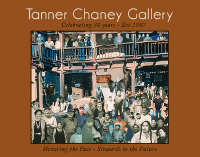Our annual Mother's Day Sale is starting now!! 20% off everything with free USPS Priority Shipping (USA Only)
Ramon Dalangyawma
NAVAJO/HOPI SILVERSMITH
TO RAMON DALANGYAWMA, the silver he works
with is more than just the raw material of his art. The 45-year old
Navajo/Hopi silversmith believes silver is a sacred element belonging
to Mother Earth and he handles the precious metal with great respect.
This spirituality is reflected not only in Ramon's art but in his life
as well.
Ramon creates Hopi overlay, a technique developed by artisans in the 1930's in which a design is cut out of a flat sheet of silver and then soldered onto another piece of silver similar on size and shape. Dalangyawma and other overlay artist emphasize the design by oxidizing the recessed areas and polishing the raised surfaces to a high polish.
As a young child, Ramon was sent to the Santa Fe Indian School as a border. "That is where I got my first real exposure to the art." Many years later, first at Phoenix Indian School and then in the U.S. Marines, Ramon discovered that he could make a little extra money selling traditional Hopi pencil drawings. When he returned home to Hoteville, Arizona, in 1976, he looked for steady employment, but there were few jobs on the reservation. He turned to silversmithing and trained at the Hopi Arts and Craft Guild where his mentors were noted Hopi silversmith Emery Holmes and Phillip Sekaquaptewa.
Ramon works with a heavier gauge of silver than many of his competitors, which gives his work additional depth and drama. Ramon's designs incorporate traditional Hopi symbols -- rain and clouds for the moisture so important to the high mountain desert, corn which represents growth and prosperity, and the animals and insects that symbolize the various Hopi and Navajo clans. "I take each day as it comes," Ramon says. "However my work comes out on any given day is how it is meant to be." But so great is his respect for the silver that he will not work on the days when he feels what he calls negative energy.
Three large mesas dominate the Hopi lands in Northern Arizona where villagers originally settled for protection against marauders from other tribes. Today, Ramon's life on Third Mesa reflects the traditions of Hopi life over the centuries. He lives simply without the modern conveniences of electricity or telephone. A gas generator provides what little power he needs in his workshop. He spends a great deal of time with the next generation, teaching younger artists, including his nine-year old son, Cheston, the art of silver overlay. He reports proudly that Cheston has already begun to win ribbons in the Youth Division at major shows.
Major Award: Santa Fe Indian Market, First, Second, and Third Place Awards Sedona Hopi Show, First, Second, and Third Place Awards Southwest Museum (Los Angeles) Intertribal Market
Ramon creates Hopi overlay, a technique developed by artisans in the 1930's in which a design is cut out of a flat sheet of silver and then soldered onto another piece of silver similar on size and shape. Dalangyawma and other overlay artist emphasize the design by oxidizing the recessed areas and polishing the raised surfaces to a high polish.
As a young child, Ramon was sent to the Santa Fe Indian School as a border. "That is where I got my first real exposure to the art." Many years later, first at Phoenix Indian School and then in the U.S. Marines, Ramon discovered that he could make a little extra money selling traditional Hopi pencil drawings. When he returned home to Hoteville, Arizona, in 1976, he looked for steady employment, but there were few jobs on the reservation. He turned to silversmithing and trained at the Hopi Arts and Craft Guild where his mentors were noted Hopi silversmith Emery Holmes and Phillip Sekaquaptewa.
Ramon works with a heavier gauge of silver than many of his competitors, which gives his work additional depth and drama. Ramon's designs incorporate traditional Hopi symbols -- rain and clouds for the moisture so important to the high mountain desert, corn which represents growth and prosperity, and the animals and insects that symbolize the various Hopi and Navajo clans. "I take each day as it comes," Ramon says. "However my work comes out on any given day is how it is meant to be." But so great is his respect for the silver that he will not work on the days when he feels what he calls negative energy.
Three large mesas dominate the Hopi lands in Northern Arizona where villagers originally settled for protection against marauders from other tribes. Today, Ramon's life on Third Mesa reflects the traditions of Hopi life over the centuries. He lives simply without the modern conveniences of electricity or telephone. A gas generator provides what little power he needs in his workshop. He spends a great deal of time with the next generation, teaching younger artists, including his nine-year old son, Cheston, the art of silver overlay. He reports proudly that Cheston has already begun to win ribbons in the Youth Division at major shows.
Major Award: Santa Fe Indian Market, First, Second, and Third Place Awards Sedona Hopi Show, First, Second, and Third Place Awards Southwest Museum (Los Angeles) Intertribal Market

